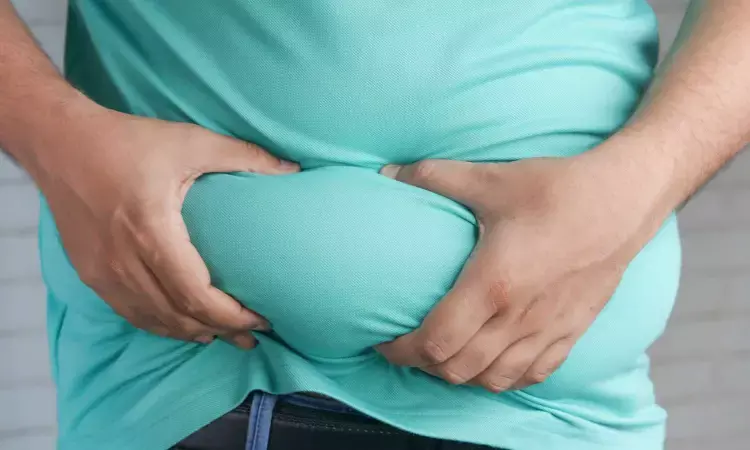- Home
- Medical news & Guidelines
- Anesthesiology
- Cardiology and CTVS
- Critical Care
- Dentistry
- Dermatology
- Diabetes and Endocrinology
- ENT
- Gastroenterology
- Medicine
- Nephrology
- Neurology
- Obstretics-Gynaecology
- Oncology
- Ophthalmology
- Orthopaedics
- Pediatrics-Neonatology
- Psychiatry
- Pulmonology
- Radiology
- Surgery
- Urology
- Laboratory Medicine
- Diet
- Nursing
- Paramedical
- Physiotherapy
- Health news
- Fact Check
- Bone Health Fact Check
- Brain Health Fact Check
- Cancer Related Fact Check
- Child Care Fact Check
- Dental and oral health fact check
- Diabetes and metabolic health fact check
- Diet and Nutrition Fact Check
- Eye and ENT Care Fact Check
- Fitness fact check
- Gut health fact check
- Heart health fact check
- Kidney health fact check
- Medical education fact check
- Men's health fact check
- Respiratory fact check
- Skin and hair care fact check
- Vaccine and Immunization fact check
- Women's health fact check
- AYUSH
- State News
- Andaman and Nicobar Islands
- Andhra Pradesh
- Arunachal Pradesh
- Assam
- Bihar
- Chandigarh
- Chattisgarh
- Dadra and Nagar Haveli
- Daman and Diu
- Delhi
- Goa
- Gujarat
- Haryana
- Himachal Pradesh
- Jammu & Kashmir
- Jharkhand
- Karnataka
- Kerala
- Ladakh
- Lakshadweep
- Madhya Pradesh
- Maharashtra
- Manipur
- Meghalaya
- Mizoram
- Nagaland
- Odisha
- Puducherry
- Punjab
- Rajasthan
- Sikkim
- Tamil Nadu
- Telangana
- Tripura
- Uttar Pradesh
- Uttrakhand
- West Bengal
- Medical Education
- Industry
Relative fat mass helps in prediction of new onset diabetes

Relative fat mass (RFM) has the potential to be utilized in the general practice environment to predict the risk of developing future diabetes because it is highly related with new-onset T2D, says an article published in European Journal of Internal Medicine.
A brand-new anthropometric equation for estimating whole-body fat percentage (based on height and waist measurements) is called relative fat mass. In order to compare RFM's performance to body mass index (BMI), waist circumference (WC), and waist-to-hip ratio (WHR), Navin Suthahar and colleagues conducted this study to explore connections of RFM with incidence type-2 diabetes (T2D).
Three Dutch community-based cohorts without diabetes at baseline provided data for this prospective longitudinal investigation. Initially, using Cox regression models, researchers looked at data from the PREVEND cohort (median age and follow-up duration: 48.0 and 12.5 years, respectively). Lifelines and Rotterdam cohorts, with median ages and follow-up times of 45.5 and 3.8 years and 68.0 and 13.9 years, respectively, were used for validation.
The key findings of this study were:
522 (6.6%) of the 7961 PREVEND participants experienced T2D.
All adiposity indicators were substantially linked with incidence T2D in a multivariable model (Pall 0.001).
Whereas a 1 SD rise in BMI, WC, or WHR was linked to an increased risk of T2D of 68%, 77%, or 61%, respectively [Hazard ratio (HR)BMI: 1.68, HRWC: 1.77, and HR-WHR: 1.61], a similar increase in RFM was linked to an increased risk of 119%.
All age groups showed an association between RFM and incident T2D, with the youngest age group (40 years) showing the biggest effect size.
The Lifelines (n = 93,870) and Rotterdam (n = 5279) cohorts' findings were mostly comparable.
In conclusion, RFM exhibits the potential to be regularly utilized in the general practice context to determine future risk of diabetes and accurately predicts new-onset T2D in the Dutch population. Our data also show that community-wide T2D risk would be significantly decreased if obesity was well controlled, especially in young people.
Reference:
Suthahar, N., Wang, K., Zwartkruis, V. W., Bakker, S. J. L., Inzucchi, S. E., Meems, L. M. G., Eijgenraam, T. R., Ahmadizar, F., Sijbrands, E. G., Gansevoort, R. T., Kieneker, L. M., van Veldhuisen, D. J., Kavousi, M., & de Boer, R. A. (2023). Associations of relative fat mass, a new index of adiposity, with type-2 diabetes in the general population. In European Journal of Internal Medicine (Vol. 109, pp. 73–78). Elsevier BV. https://doi.org/10.1016/j.ejim.2022.12.024
Neuroscience Masters graduate
Jacinthlyn Sylvia, a Neuroscience Master's graduate from Chennai has worked extensively in deciphering the neurobiology of cognition and motor control in aging. She also has spread-out exposure to Neurosurgery from her Bachelor’s. She is currently involved in active Neuro-Oncology research. She is an upcoming neuroscientist with a fiery passion for writing. Her news cover at Medical Dialogues feature recent discoveries and updates from the healthcare and biomedical research fields. She can be reached at editorial@medicaldialogues.in
Dr Kamal Kant Kohli-MBBS, DTCD- a chest specialist with more than 30 years of practice and a flair for writing clinical articles, Dr Kamal Kant Kohli joined Medical Dialogues as a Chief Editor of Medical News. Besides writing articles, as an editor, he proofreads and verifies all the medical content published on Medical Dialogues including those coming from journals, studies,medical conferences,guidelines etc. Email: drkohli@medicaldialogues.in. Contact no. 011-43720751


